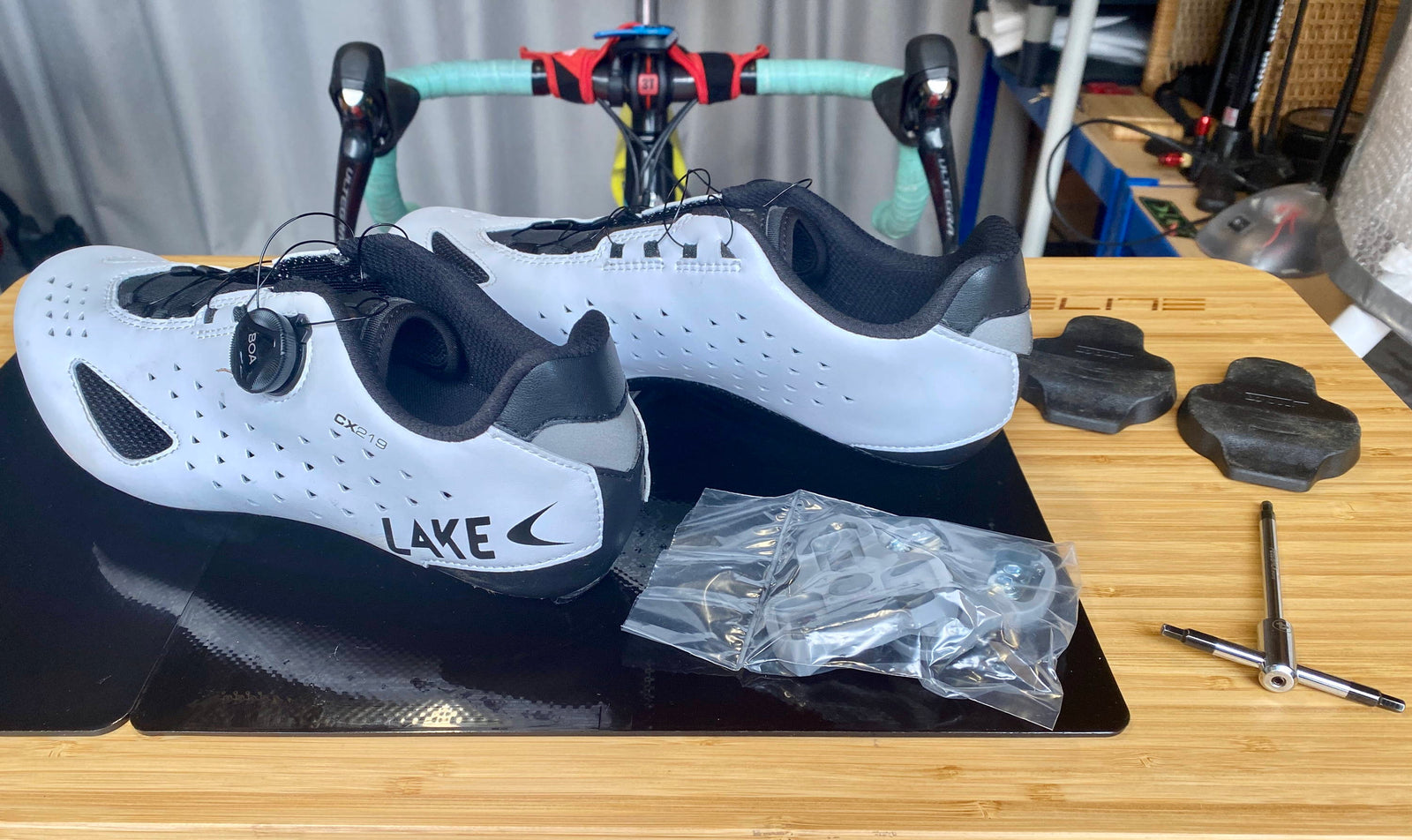Cycling Shoes Cleat Wear and Replacement

Written by Robert Thorpe
Importance of Cleat Management
You may have noticed some issues with your old road cycling shoes during the year, causing pain in your feet or even causing pain elsewhere, in the knees or the hips. If so, then we’d definitely recommend visiting one of our Lake shoe fitting experts at our retail partners, and getting them to take a close look at your feet and cycling position - give yourself some well-earned foot love! Even if your road or off-road cycling shoes are a good fit and perform well, you still need to take care of the cleats, replacing them frequently and fitting them correctly. Your cycling shoe cleats get damaged not only from the wear and tear of pedal attachment, but also from the walking around and hike a bike travel with your mountain bike.
Floating cleat systems were designed to improve your position in the pedals and reduce the risk of knee injuries, and the cleats vary between riding styles. They can also become damaged by walking about too much on hard surfaces too – those café stops off the bike. Cleats are a crucial part of the pedalling equation, and so it’s important to know a little bit about them.
Wear Indicators & Engagement Issues
As the cleats become worn, you’ll find engagement and disengagement difficult, and your foot positioning won’t be as secure, leading to a performance loss and possible danger, if you can’t release your foot from the pedal quickly. Generally, cleats should be replaced after 3000 miles or so, or immediately if you see adverse wear or damage to them, or notice issues with shoe stability with the pedal.
In most cases, especially with the best cleat brands, your cleats will come with wear indicators to help you decide when to change them. However, you’ll also notice engagement issues yourself, even if the wear indicators don’t show a problem. If your engagement or pedal fitting isn’t tight and positive, then it’s time to change your cleats, to keep you safe and to make the most from your Lake cycling shoes. Make sure that you know what the wear indicators look like for the brand of cleats that you’re using. You might also be experiencing pain when cycling, that can’t be put down to anything else. If you haven’t properly chosen the right cleats for your own individual need, then this can be quite a common issue.
Cleat Position
Having cycling shoe cleats positioned incorrectly can also cause significant problems for cyclists. With poorly positioned cleats, you can experience pain in the foot, the ankles, the knee, the hips, and the lower back, so it’s crucial to get it right - especially if you’ve chosen a pair of Lake, road cycling shoes that are perfectly fitted to your feet. It therefore makes sense to fit the cleats perfectly too.
If you do want a basic guide, then as a rule of thumb these days is to set up your new cleats along a plane or line, in the area of the metatarsal-phalangeal joint of the third toe. If you set a line that runs between the metatarsal-phalangeal joint of your first toe and your third toe, placing your shoes on and marking the location, and then setting the new cleat to the centre of this. Then, try the pedalling and make the necessary adjustments.
Use a Template
If your old cleats were already in a good position, then simply draw around the position of your cleats before removing them, and then fix the new cleats into the template on the sole of the shoe. Test out the new position and ensure that it feels correct, and you're ready to go.
Cleat Float Variations
Cleat Float is a technical subject area, and we really do recommend that you talk with one of our expert shoe fitting Lake dealers, and let them share their knowledge with you. In basic terms, the cleat ‘float’ relates to the natural rotational movement of your foot during the pedal stroke. Having the right cleats with the right degree of float will always improve your comfort and performance, allowing your foot and leg to move comfortably and naturally. Basically, having the right ‘float’ cleat will bring your foot movement into the best position on the bike.
As with all cycling developments, it's about performance and comfort. The floating cleats were developed to allow a small degree of sideways rotational movement of the heel of the foot when clipped into a pedal. Your own heel may stay still in its natural movement, or it might move towards or away from the bike a small degree. The floating cleat allows the foot to centre itself during the pedal stroke and maximises efficiency.
You can get cleats with ‘zero float’, and many World Tour professional riders advocate the use of a fixed-position, or ‘zero float’ cleat. These top-level riders often felt that the fixed position of the cleat allowed for a very power-efficient pedal stroke, as the zero-float cleat gave no opportunity for unwanted movement of the leg. The main pedal brands, such as Shimano and Look, both produce a range of cleats with varying degrees of floats, based on whether your toes point outwards or inwards. There's lots more science to it obviously, and we always recommend speaking to our shoe fitting partners in-store.
Summary
We want you to make the most from your Lake cycling shoes, on road and trail, which is why we believe that getting the right cleat set-up is important. If you are getting pain when riding, it may be as simple as having the wrong cleats on your shoes. And, once you do have the right cleats, always keep an eye on them and change them frequently. You can also get covers for your cleats, so that when you’re not pedalling and you’re off the bike, walking around, the cleats stay protected. They’re really small and will fit into one of your jersey pockets. Our specialist dealers will be able to help you, by both measuring your feet and helping you to find the right cleats for your own pedalling style, so that you maximise your performance and your comfort, riding for longer and with more smiles. 😊
Check out the models mentioned in this blog







Leave a comment